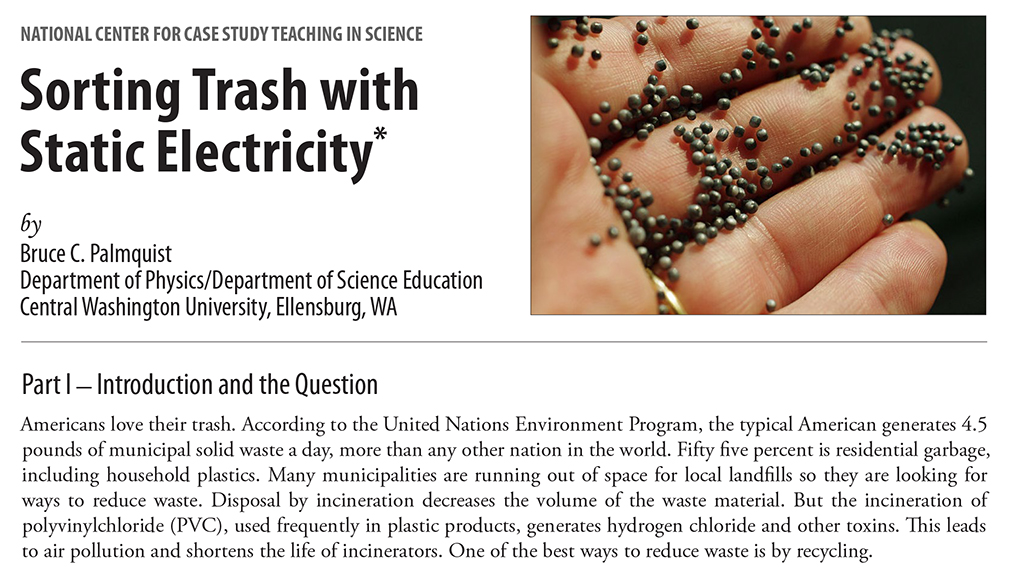Abstract
Recycling plastic is an effective way to reduce waste in landfills. However, in order to effectively reuse recycled plastic, different types of plastics must be separated from one another. This is a time intensive task. Engineers in Japan have tested a way to separate plastics using static electricity. In this interrupted case, students will design a method to separate plastics using static electricity, make hypotheses based on what the Japanese engineers did, and analyze their actual data with a focus on bar graphs. The case can be used as a course transition from electric charge to electric fields. Students should have prior knowledge about the triboelectric series and Coulomb's Law; they should also be familiar with the basic kinematic equations for objects moving with constant acceleration. Although originally developed for an introductory calculus-based physics class, calculus is not required, and so the case can easily be used in an algebra-based college physics class or even a high school physics class that covers static electricity concepts.



